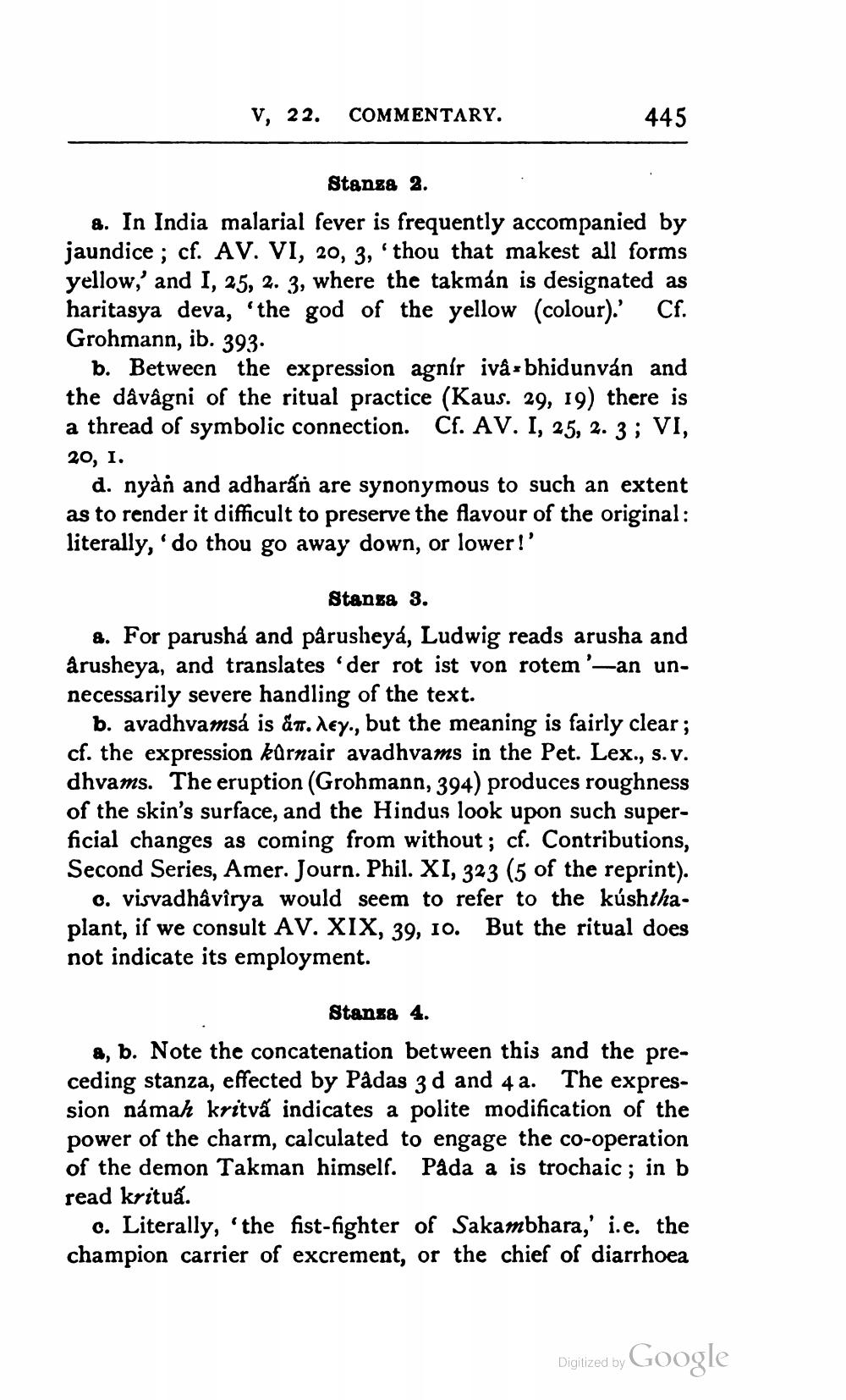________________
V, 22. COMMENTARY.
445
Stanza 2. 8. In India malarial fever is frequently accompanied by jaundice ; cf. AV. VI, 20, 3, 'thou that makest all forms yellow,' and I, 25, 2. 3, where the takmán is designated as haritasya deva, 'the god of the yellow (colour).' Cf. Grohmann, ib. 393.
b. Between the expression agnir ivå: bhidunvan and the dâvâgni of the ritual practice (Kaus. 29, 19) there is a thread of symbolic connection. Cf. AV. I, 25, 2. 3 ; VI, 20, 1.
d. nyàn and adharán are synonymous to such an extent as to render it difficult to preserve the flavour of the original: literally, 'do thou go away down, or lower!'
Stansa 3. 8. For parusha and pårusheya, Ludwig reads arusha and ärusheya, and translates 'der rot ist von rotem'-an unnecessarily severe handling of the text.
b. avadhvamsá is át. dey., but the meaning is fairly clear; cf. the expression karnair avadhvams in the Pet. Lex., s.v. dhvams. The eruption (Grohmann, 394) produces roughness of the skin's surface, and the Hindus look upon such superficial changes as coming from without; cf. Contributions, Second Series, Amer. Journ. Phil. XI, 323 (5 of the reprint).
0. visvadhâvîrya would seem to refer to the kushthaplant, if we consult AV. XIX, 39, 10. But the ritual does not indicate its employment.
Stansa 4. a, b. Note the concatenation between this and the preceding stanza, effected by Pådas 3 d and 4 a. The expression námah kritvá indicates a polite modification of the power of the charm, calculated to engage the co-operation of the demon Takman himself. Pada a is trochaic; in b read krituá.
o. Literally, 'the fist-fighter of Sakambhara,' i.e. the champion carrier of excrement, or the chief of diarrhoea
Digized by Google




